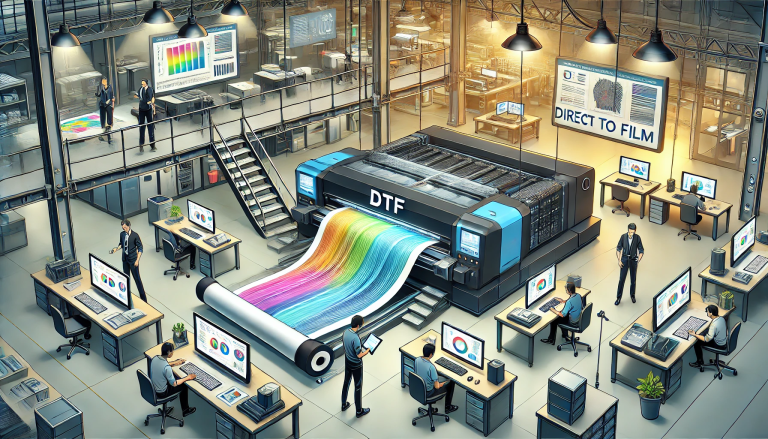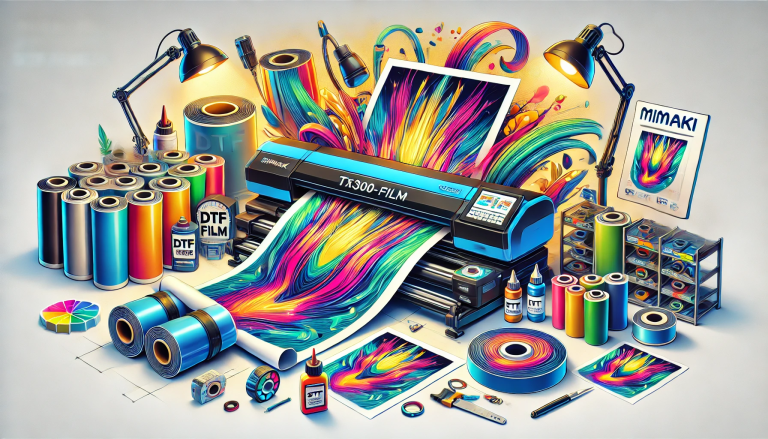“Exploring the Wonders of DTF Glitter Film: A Comprehensive Guide” -MAXDTF- DTF Transfer Sheet Supplier, DTF Foil Factory, Made in China
Introduction
Direct-to-Film (DTF) printing technology has opened up exciting possibilities in the world of textile and garment decoration. One of its most fascinating innovations is the DTF Glitter Film, which brings a sparkling new dimension to printed designs. DTF Glitter Film allows the printing of vibrant, colorful images with a unique glitter effect, adding visual interest and value to the end product. This article provides an in-depth analysis of DTF Glitter Film, its printing process, benefits, and future potential.
Part 1: An Overview of DTF Glitter Film
DTF Glitter Film is a specialized form of transfer film designed to work with DTF printing technology. This film includes a layer of micro-glitter particles, adding a shimmering effect to printed designs. The film is used as a carrier on which the design is printed using DTF inks. Once printed and cured, the design can be transferred to a wide range of fabric types with a heat press.
Just like the standard DTF process, the DTF Glitter Film printing process involves creating a design, printing it onto the glitter film, applying an adhesive powder, curing the print, and finally, heat pressing the design onto a garment. The result is a dazzling, high-quality, full-color design that not only looks spectacular but also lasts for a long time even with repeated washing.
Part 2: The DTF Glitter Film Printing Process
The DTF Glitter Film printing process can be broken down into the following steps:
- Design Creation: This first step involves creating or selecting a design suitable for glitter printing. The design is then processed using graphic design software, such as Adobe Illustrator or Photoshop.
- Printing: The design is then printed onto the DTF Glitter Film using a specialized DTF printer, which sprays CMYK (Cyan, Magenta, Yellow, and Key-Black) and white inks in tiny droplets to form a high-resolution image.
- Application of Adhesive Powder: An adhesive powder is then applied to the printed film. The powder sticks only to the areas where there is wet ink, creating a base for the design to adhere to the fabric in the final step.
- Curing: The film, now covered with adhesive powder, is passed through a heat tunnel or oven. The heat cures the adhesive powder, binding it to the ink and drying the print.
- Heat Press Transfer: The final step involves placing the prepared film onto the fabric and using a heat press to transfer the design. The adhesive powder melts and binds the ink (along with the glitter particles) to the fabric, creating a vibrant, glittery print.
Part 3: Benefits of DTF Glitter Film
The use of DTF Glitter Film brings several benefits:
- Unique Visual Appeal: Glitter film adds a unique glitter effect to designs, creating an attractive visual appeal that stands out.
- Versatility: Just like standard DTF printing, DTF Glitter Film can be used on a wide range of fabrics, from cotton and polyester to nylon and blended fabrics.
- Durability: Despite the added glitter effect, prints made with DTF Glitter Film are as durable as traditional DTF prints. They can withstand repeated washing without significant fading or loss of glitter.
- Design Flexibility: With DTF Glitter Film, there are no limitations on the complexity or color range of designs. The film can handle detailed, full-color designs just as easily as simpler, monochrome ones.




